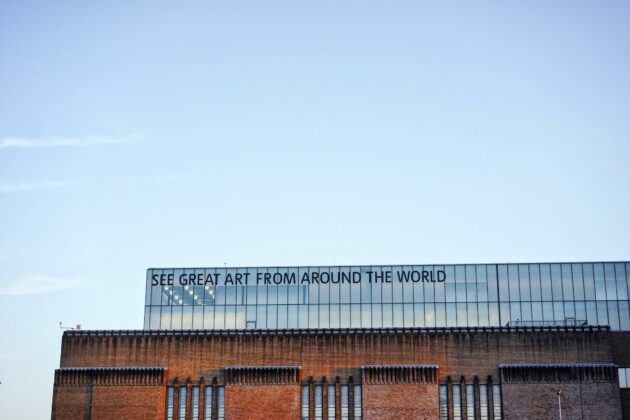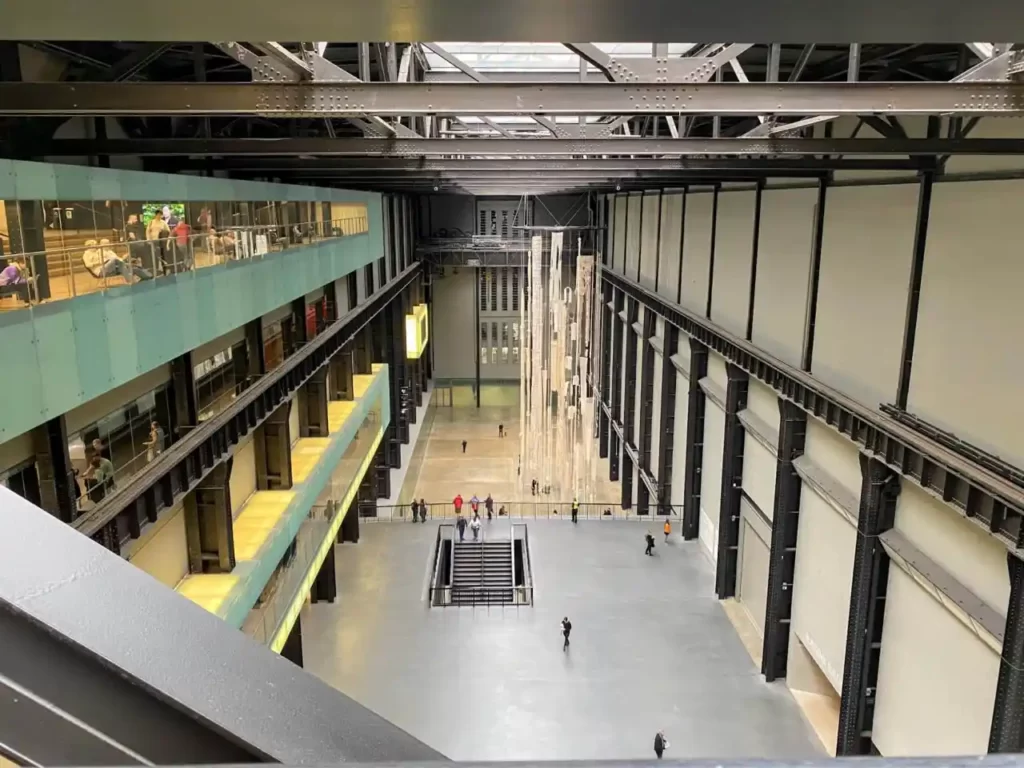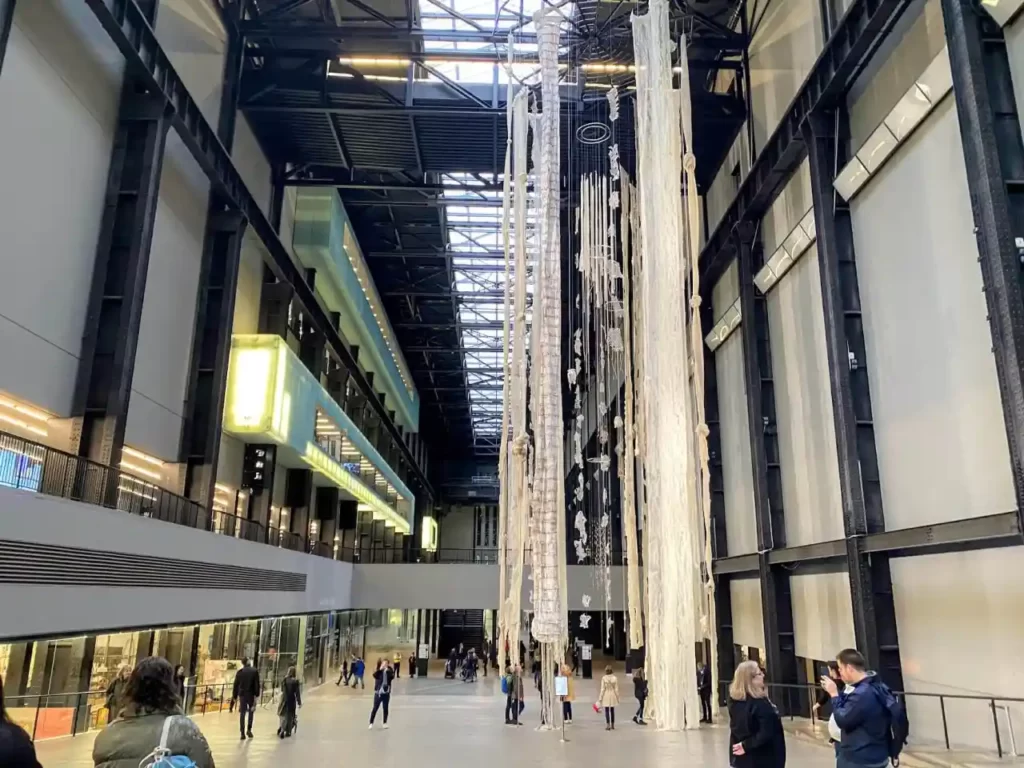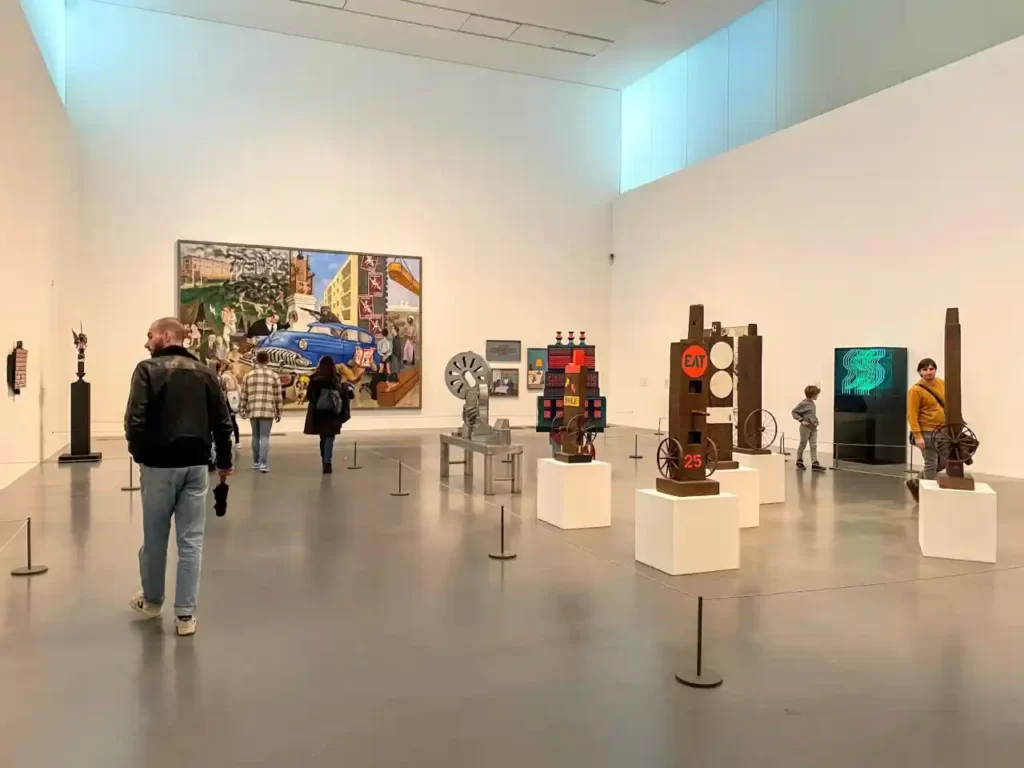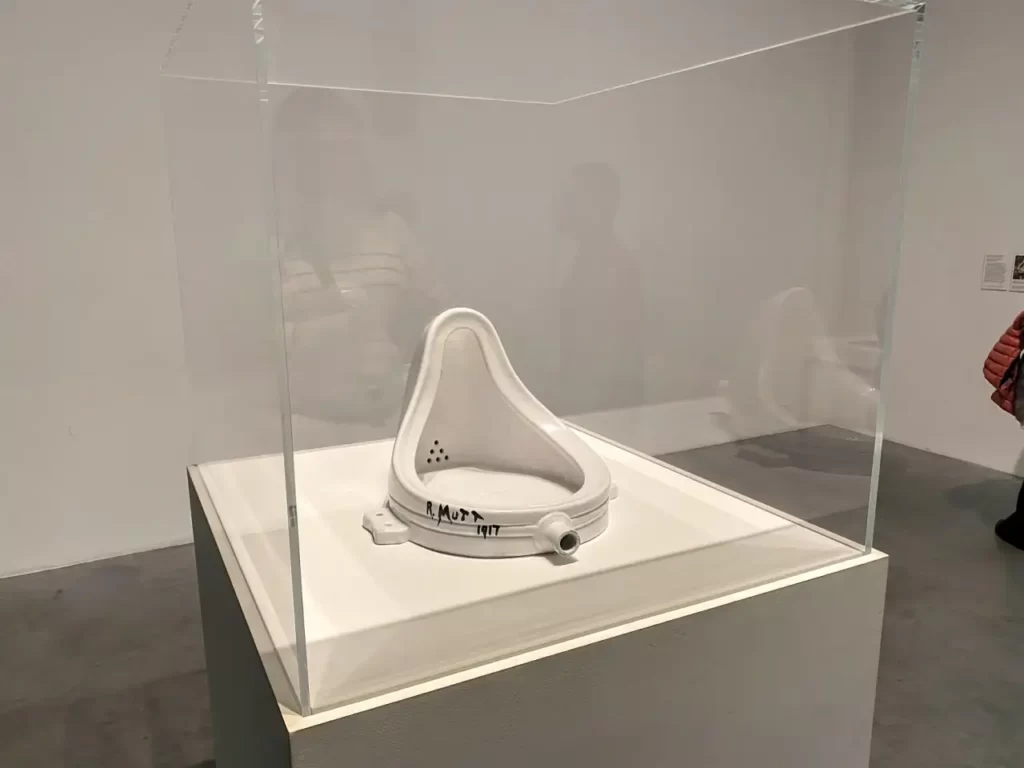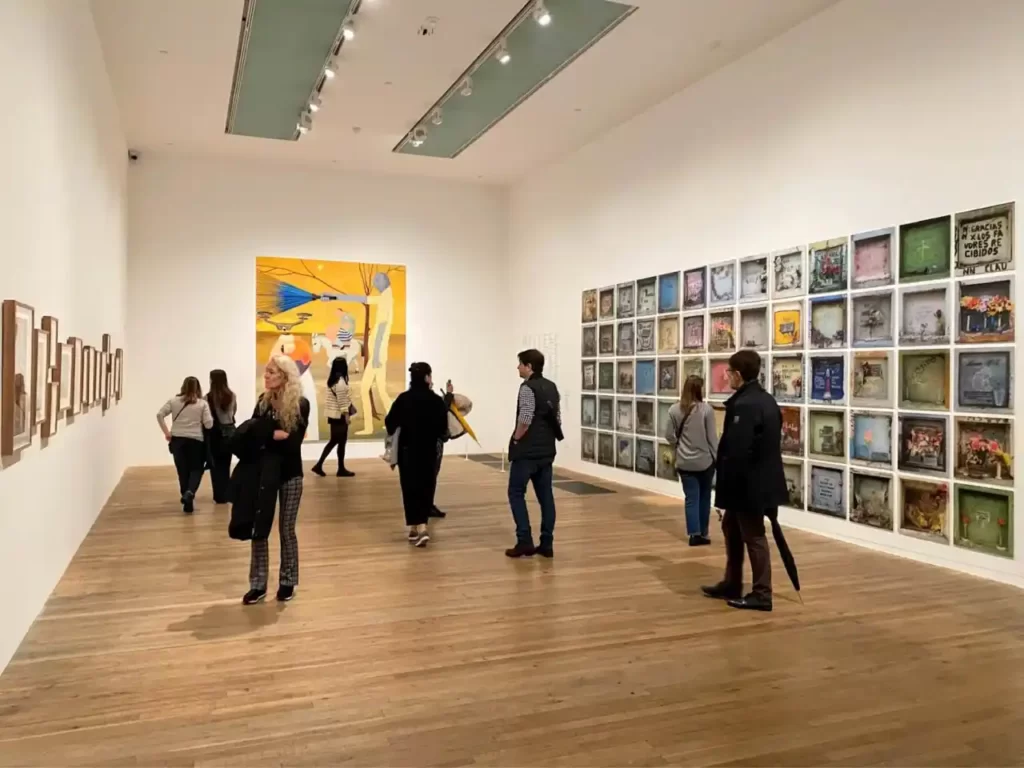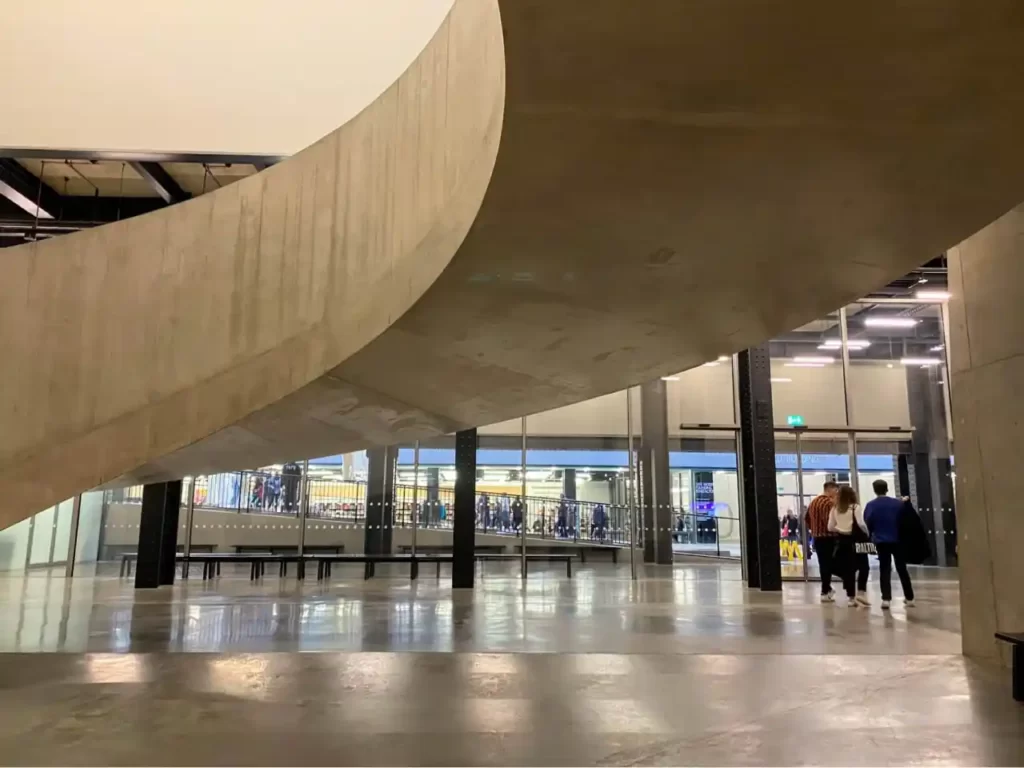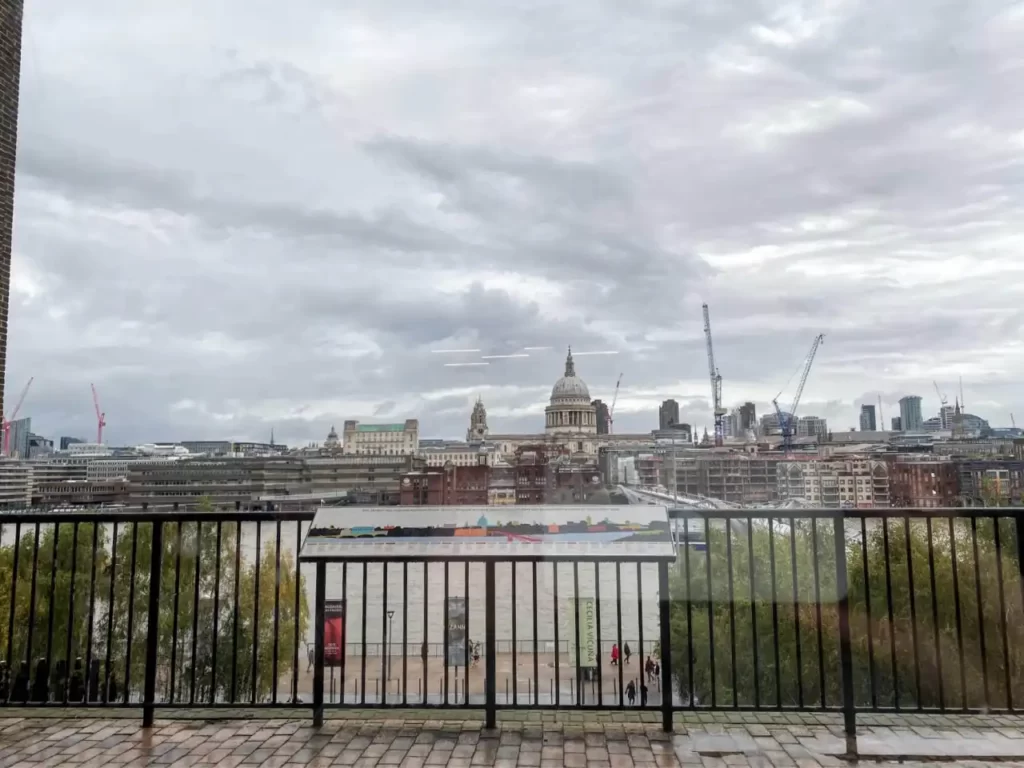Tate Modern is one of the best contemporary art galleries in the world. Located in London and opened in 2000, it’s a place where you can see some of the most fascinating international modern and contemporary artworks. Tate Modern regularly host temporary shows, too. So, there is always something to see at that fantastic place. It’s a massive museum with numerous artworks, so keep reading for tips for visiting Tate Modern and Tate Modern highlights.
Tate Modern Museum in London
One of the best things about visiting London museums is that most of them have free access. This allows you to see them multiple times and enjoy their collections over and over again. You’ll only need to pay for the entrance ticket to visit some major temporary exhibitions. And Tate Modern is no exception to that.
Tate was founded as an art gallery in 1897 by the sugar merchant Henry Tate. Its base forms 65 contemporary art paintings owned by him. However, it was in 2000 that the institution split into four different Tate galleries: Tate Modern and Tate Britain, located in London, Tate Liverpool and Tate St. Ives in Cornwall.
This was when Tate Modern found its new home in a former Bankside Power Station, built after the Second World War. Tate Modern displays artworks made from 1900 onwards. So, while wandering around it, you can expect to see some famous modern artworks. However, its focus is on contemporary art.
The artworks at the museum aren’t displayed in chronological order but instead by the theme. I like that because it’s the best way to explore contemporary art. In some museum rooms, you’ll find inscriptions with short introductions about those themes that will help you understand the artworks displayed. You’ll also find some questions on them, encouraging you to think about the meaning behind those art pieces.
⤷ Read more: 15 Best museums you have to visit in Europe
Free Tate Modern art tours
The educational element is crucial at Tate Modern, so they regularly organise free art tours held by museum educators. You can see the tours schedule on the museum’s website or on some of the info panels once you’re at the museum.
I always vouch for joining a tour when visiting a museum because it’s the best way to learn about the artworks displayed. And that’s especially the case when it comes to contemporary art, for which you often need the context to understand it.
⤷ TIP: That’s why my advice for visiting Tate Modern is to check when some free art tours are organised and to visit the museum at that time.
Tate Modern Highlights
Tate Modern is home to so many fascinating artworks. However, if you have limited time to spend in this museum, here are some of the Tate Modern highlights you shouldn’t miss.
Andy Warhol: Marilyn diptych (1962)
Tate Modern is home to one of the most famous artworks created by the pop art icon Andy Warhol. Marilyn Diptych was made in 1962, a few months after the actresses’ death. And quickly became one of the most famous contemporary art paintings.
Pablo Picasso: Nude woman with necklace (1968)
This painting depicting the painter’s second wife, Jacqueline Roque, is one of Pablo Picasso’s most famous nudes. He described it as: “It’s all there; I try to do a nude as it is”.
Marcel Duchamp: Fountain (1917)
One of the most well-known Marcel Duchamp’s readymades, “Fountain”, is one of the most iconic artworks of modern and contemporary art. Seventeen authorised versions of “Fountain” have been made and can be seen in museums worldwide. One of them makes a Tate Modern highlight.
Mark Rothko: Seagram Murals (the 1950s)
The Seagram Murals made by the American artist Mark Rothko are some of the most famous Tate Modern highlights. With his palette of reds, browns and blacks, Rothko wanted to evoke a deep connection between the viewer and his artworks.
Roy Lichtenstein: Whaam! (1963)
Another famous pop art artwork at Tate Modern is Roy Lichtenstein’s “Whaam!”. Inspired by the war comic books, it represents a military aircraft shooting a rocket into an enemy plane.
Henri Matisse: L’Escargot (1953)
Henri Matisse created his “L’Escargot”, or a snail, by arranging the colour patterns in a spiral shape. He combined here complimentary colours, giving this painting a fascinating colouristic value.
Yves Klein: IKB 79 (1959)
Yves Klein started working on his monochrome paintings in the late 1940s to achieve creative freedom. “IKB 79” is one of those paintings, later becoming one of the icons of contemporary art and Tate Modern highlights.
⤷ Read more: A guide for the perfect museum visit
Tate Modern temporary exhibitions
Tate Modern highlights are something you shouldn’t miss during your visit to this museum. But, its temporary exhibitions are some of the top art events in Europe. You can check the temporary exhibitions schedule on the museum website. Usually, you’ll need to pay an admission ticket for them. Since they tend to be very popular, book your entrance ticket with visiting time scheduled on the museum website.
During my last visit, Tate Modern hosted a fantastic exhibition about Paul Cézanne. It was such an excellent opportunity to see so many of his paintings in one place. And to learn more about that fascinating painter, one of the founders of modern art.
⤷ TIP: Tate Modern takes its temporary exhibitions seriously. They often publish a comprehensive book with the theme of the show. And they create some good-quality design souvenirs to go with it. So, make some room in your bag for them when visiting Tate Modern.
Tate Museum bookshop
If you are interested in modern and contemporary art (which I believe you are if you’re reading this article), then the Tate Museum bookshop will look like heaven to you. It’s home to a fantastic collection of books about contemporary art. But also about design, architecture, museums, curating, art criticism, and other similar topics.
It’s undoubtedly one of the best museum bookshops I have ever visited. Especially when it comes to modern and contemporary art and art history as a profession.
⤷ Read more: The most intriguing art heists in European museums
Tips for visiting Tate Modern
⤷ Viewing platform – At the museum’s top floor, you’ll find a viewing platform from where you’ll have a fantastic panoramic view of London.
⤷ Tate Modern Cafe – When tired of exploring the museum, take a break at its cafe on the third floor. They have great coffee and some nice pastries. But the best thing is, they also have a fantastic view of London you can see in the photo below. The museum is also home to two restaurants.
⤷ Taking photos at Tate Modern – You can take photos at the free part of the museum (of course, without flash). However, taking pictures is not allowed at some special exhibitions.
⤷ Tate Modern museum shops – I already mentioned Tate Modern bookshop. However, a few museum shops are located at Tate Modern, as well. They have a lovely selection of gifts and souvenirs to get home from this museum. The children’s section is very nice. But, you’ll also find some fine product design in them, too.
⤷ Book tickets for special exhibitions in advance – Although the admission fee is free at Tate Modern, you’ll need to pay to get to some of the special temporary exhibitions. They are usually very popular, so book your ticket in advance at the Tate Modern website.
Tate Modern is one of the best museums in London and one of the greatest contemporary art museums in the world. If you’re an art enthusiast, that’s a place to put on your list of museums to see. Save this article to make your visit to Tate Modern highlights easier.
Have you been to Tate Modern? Do you have any tips for visiting Tate Modern in London you’d like to add? Let me know in the comments.
Cover photo by wen chen on Unsplash

